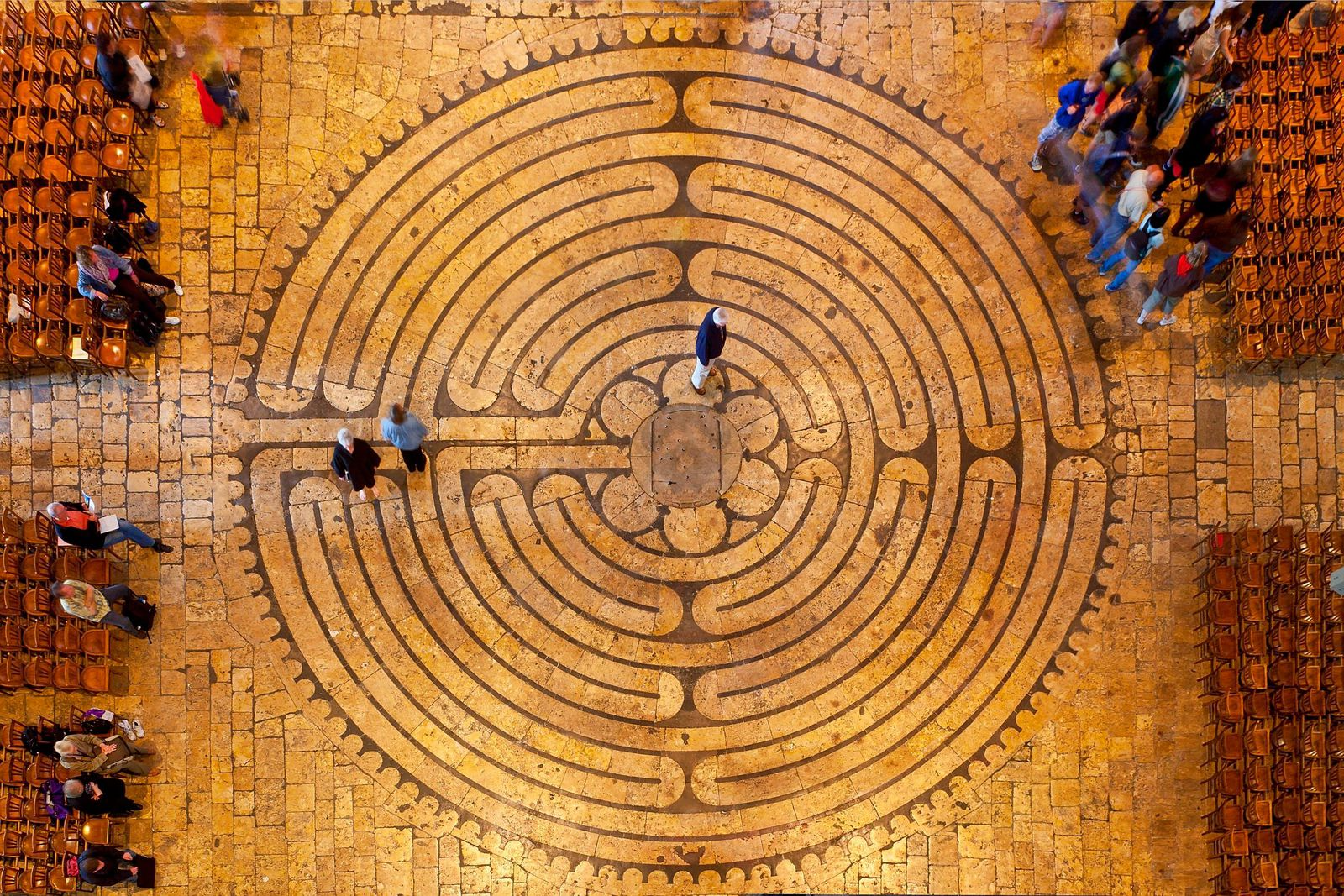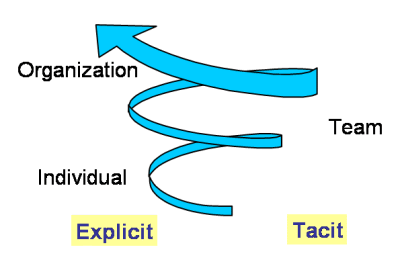The Circular Being:
Visual thinking makes extensive use of geometric shapes, and the circle is one of the most common. The circle is a geometric form with an immense influence on our lives. The circle, a perfect circular shape, is found everywhere around us, both in nature and in the man-made world.
Gaston Bachelard, in his book "The Poetics of Space," writes that being is circular. Circularity is built and developed in consciousness, becoming its permanent and established form, not as a simple fact but as a phenomenological thought, allowing us to affirm our existence from within.
The central poetic example he provides is that of the bird, which is complete circularity, the circular life. The bird is almost entirely spherical. It is a model of existence. Although the bird is perceived in flight as an arrow shot through the air, in its cosmic state, as a concentration of life protected on all sides, it is the being of circular life.
The Spiral - From Simple Circle to Complex Form:
The simple yet perfect shape of the circle allows for the creation of a wide variety of more complex geometric shapes, based on a circle with a center. Hurricanes, wheels, propellers, camera lenses, and film reels - these are just a few of the many examples of the various appearances of the centered circle in everyday life.
A Universal Symbol of Growth and Knowledge
The spiral is one of the most important geometric shapes in human culture. It is constructed from a circle that begins at a central point and develops in a continuous line of increasingly larger circles to the outer edges. The unique shape of the spiral represents a unique knowledge structure and is widely used in many fields, such as art, architecture, and science.
From Propellers to Film Reels
Piston-engine propeller planes are an example of the integration between technology and a spiral knowledge structure. The propeller at the front of the plane symbolizes the rotational movement that characterizes the spiral shape. Nowadays, jet engines are common, whose propellers are not visible and are hidden within a casing. The helicopter, on the other hand, with its giant overhead rotor, continues to represent the evolving rotational movement.
The Celluloid Reel
Pre-digital cinema was characterized by large and heavy celluloid film reels that were installed in cameras and projectors. These reels are a representation of the spiral knowledge structure, as they contain ever-evolving content, from the beginning of the reel at its outer edge to its end at its center.
Further Examples of the Spiral Form:
The Ear
In the human body, the ear has a spiral shape. The ear closely resembles the posture of a fetus in its mother's womb.
Bird Thermals
Birds have been an avid subject of research and a source of knowledge since ancient times. Bird thermals have a spiral structure. Heavy birds, such as storks and eagles, need rising warm air currents to progress in their migrations. These warm air currents are created in the late morning hours when the ground heats up. During migration seasons, one can witness huge flocks of birds accumulating vertically and in an ever-growing circular motion until they reach the height where the warm air current ceases. From this point, they glide in the desired direction.
Thermals, as a meteorological phenomenon, were discovered in Germany in the late 1920s by glider pilots in the Rhön Mountains. This discovery made the sport of gliding much more significant. Glider pilots soared for many hours, covering distances of hundreds of kilometers and crossing national borders.
In powered aviation, there are "holding patterns" before landing, where planes circle the runway until, at the appropriate moment, they approach and descend towards it.
In Culture
Spiral labyrinths were known in ancient times. In the Middle Ages, spiral labyrinths were built in churches and served as a means for a symbolic journey to the center of the soul. From the European Renaissance onwards, the spiral labyrinth was constructed in magnificent gardens, composed of intricate paths separated by high hedges. Navigating a complex labyrinth has become a popular form of leisure to this day. Labyrinths are an integral part of the world of computer games and as a method of brain training for problem-solving.
However, although the spiral labyrinth is considered an integral part of culture, only a few books have been written about it. Postmodern thinkers mention the spiral, but they hardly discuss it beyond its basic presentation in various phenomena.
Various national, civilian, and military emblems reference the spiral shape. The rosette form, consisting of three circles of different colors nested within each other, which appears as a symbol on the fuselage of British and French aircraft, simulates the spiral shape. The swastika is another image.
Center-Periphery Relations
Center-periphery relations are a central component of human society. These relationships are also known as the "centripetal-centrifugal" pair of forces. Movement is possible in both directions, from the outside in and vice versa. These relationships exist as verbal and/or visual expressions and are sometimes combined with a distinct vertical dimension, as in the historical social-spatial movement "from village to city," and within the city, from the suburbs to the center.
The dynamics and energies embedded in the movements between the center and the periphery cause the connection between the two ends to be not in a straight line but rather curved, thus creating a spiral structure. The French Revolution, which occurred following the invention of the hot air balloon, is an example of a social-spatial spiral vortex.
The Spiral and Perspective
The spiral and perspective, seemingly two entirely different geometric shapes, share a hidden but significant connection. The spiral, in its constantly winding and expanding form, symbolizes movement, development, and continuous change. Perspective, on the other hand, creates an illusion of depth and dimension on a two-dimensional surface, representing the human attempt to perceive and understand the three-dimensional world around us. The connection between them lies in the perception of movement and change in space. When we observe perspective, our eye moves along the converging perspective lines, experiencing a sense of movement and depth. Similarly, the spiral, in its constant inward or outward motion, creates a sense of progression and regression in space. Both forms, therefore, reflect how we perceive and interpret the world around us, movement, change, and space, and provide us with visual tools to represent them.
The Labyrinth in the Legend of Daedalus and Icarus
In the story of the legend, there is one element, the labyrinth, that has become detached from the legend itself and has become an important model in its own right. The story of the Cretan labyrinth begins with King Minos' disappointment that his wife gave birth to a monstrous son, the Minotaur. He ordered Daedalus to build a spiral maze, the labyrinth, for him, and from time to time, he would sacrifice young Athenians to it, who were sent into its depths. One of them, Theseus, managed to overcome the maze by tying a thread to its entrance, reaching the Minotaur, killing it, and returning safely. Daedalus, fearing for his life, escaped from the island along with his son Icarus using wings he had built. Although seemingly there is no direct connection between the two events in the legend, they are united by the spiral shape, which expresses a journey to freedom.
In Art
The spiral in art can be positive or negative, visual or verbal, outward or inward-facing, and more. In the world of modern art, there are many works based on spirals, but they are usually unexplained and perceived as personal expressions. The spiral in them is seen as an artistic tool.
Religious Circumambulations and Circle Dances
Another type of spiral thought structure manifests in religious circumambulations and circle dances. A prominent example is the circumambulation around the Kaaba in Mecca, where throngs of believers circle the sacred stone, gradually attempting to approach and touch it while spiraling inwards, and then gradually retreat outwards from the circle. In Judaism, during the Simchat Torah celebrations, the Torah scroll holder stands at the center of the dancing circle, surrounded by rings of dancers, each taking turns to approach the center and kiss the scroll.
Other circumambulatory circle dances are more secular but widely practiced. These include dances around a marrying couple, where those closest to them alternate in the inner circle, or dances in alternative celebrations and joyous events, where the person being celebrated stands at the center, switching places after a certain time.

the ancient "Wheel of Spirits" in the Golan Heights | 
A spiral-shaped labyrinth in a garden in England |
|
|

Spiritual spiral in Chartres Cathedral, France | 
Spiral knowledge structure in modern education |
The Spiral Knowledge Structure in Education:
Abstract vs. Concrete Learning
The spiral knowledge structure in education is merely a framework for a predominantly verbal approach. The fundamental visual thinking involved has vanished. This is because the spiral knowledge structure represents abstract thinking, bordering on imagination, and is therefore not suitable for imparting to students within the formal education system.
Building Knowledge Step-by-Step
Educational knowledge structures have the form of a visual spiral ascending upwards. The student begins their studies in small, low circles of knowledge. New and broader circles are added above them, with each one being a continuous extension of the one below it.
Cognitive Constructivism
The organization of human knowledge according to a developing spiral structure is part of the theory of cognitive constructivism in education. The thinkers of this school, John Dewey and Jean Piaget, wisely saw intelligence as a concept that develops according to age, through increasing interaction with the environment. This theory also has moral value, as it identifies deep internalizations of developing knowledge, emotional involvement, and the need for socialization.
From Geography to Medicine
The spiral knowledge structure is very common in the field of pedagogy, but due to its development towards an undefined direction, of infinite knowledge expansion, it is a somewhat vague concept of higher-order thinking. The practical spiral model is mainly implemented in geography studies in field conditions. Such learning begins with a tangible stage of touring the area and ends with an abstract summary in the classroom. It is all done through multidisciplinary dialogue. The model is also applied in medical studies, as it offers, in ascending stages, formal learning, disease recognition, and practical specialization.
Vertigo - The Spiral of Silence:
The Primal Fear of the Void
According to Gaston Bachelard, the experience of imaginary falling, known in psychology as "vertigo," is a primal truth of the dynamic imagination. However, it does not exist in the aerial imagination as an invitation to a journey. For the most part, it is a journey into the void, the pit of absolute emptiness, the infinite fall, the plunge like a stone into the abyss where there is nothing. This is a primitive fear. It is found as a constant component in fears of different kinds, such as the fear of darkness. The subconscious is drawn to this basic life experience, but due to a lack of mental strength, there are no words to describe it.
Mass Media and the Unspoken
The spiral of silence, which is the fear of conceptual loneliness, is important in the study of mass communication, which is visual, associative, and lacks verbal clarifications. The imaginary fall in it often appears in the form of a vortex or a converging spiral.
The Deadly Grip of Vertigo in Flight
The feeling of terror, paralysis, loss of control, disorientation, and loss of connection with reality is a familiar phenomenon among flight and gliding trainees. In the skies, the trainee sometimes finds himself in sudden panic due to the fear of falling. He becomes fixated, in body and mind, on a flight path, unable to deviate from it in the slightest. As a result, he rapidly loses control of the aircraft and falls to his death, to the shock of those watching him.
The Spiral Knowledge Structure in Cinema:
Many filmmakers utilize the spiral knowledge structure in their works. Despite this, only a few books exist on the subject.
Paul Virilio wrote that the purpose of cinema is to evoke an effect of vertigo in viewers. He described the vertigo effect as parallel to the effect created by a missile fired at top speed toward a visual target, causing the heads of all those watching it to spin.
"The Gold Rush" (1925) is an American silent comedy film directed, produced, written by, and starring Charlie Chaplin. The film tells the story of the Tramp, who arrives in Alaska during the Gold Rush and tries to find his fortune while encountering a gallery of characters in the town and on the mountain. The plot develops in an expanding spiral structure, repeatedly returning to the narrative and spatial starting point, the town's inn. The film is considered one of the best of all time.
"Vertigo" (1958) is an American psychological thriller film directed by Alfred Hitchcock, which tells the story of a retired police detective, suffering from vertigo, who is hired by his friend to follow the friend's wife and begins to develop an affair with her. The film deals with the struggle between reality and illusion. This film is also considered one of the best of all time.
"Cold Mountain" (2003) is an epic film that tells the story of a Confederate army deserter at the end of the American Civil War, returning to his beloved, at a time when the South is controlled by extremist police militias. The spiral structure of the film is gradually created, from the soldiers' trenches at the front, through life in the rear, to the top of the mountain, where a fateful duel takes place.
"Eye in the Sky" (2015) is the most important of all the films made about drones. The film depicts a military operation conducted remotely using drones and cyberspace. A British colonel seeks to launch a drone missile at a house in Nairobi where terrorists are located, but there is a risk of harming a little girl. The spiral knowledge structure is prominent in the film. Center-periphery relations are presented in the plot as contrasts. The scenes from the center to the periphery and vice versa build the plot's progression. In parallel to the narrative, the cinematography in many scenes is also spiral, with the camera moving in and out between a focal point and open spaces.
The "James Bond" film series begins with a recurring opening sequence where the hero is seen through the barrel of a gun with a spiral groove.
The structure of a classic thriller film script, which begins with a broad presentation of the plot's theme, both verbally and visually, and continues with a search and investigation process from mystery to its resolution, necessitates extensive use of the spiral knowledge structure. The spiral knowledge structure in them, which develops between the concrete and the abstract, compensates for inevitable visual deficiencies.

Spiral labyrinth |

